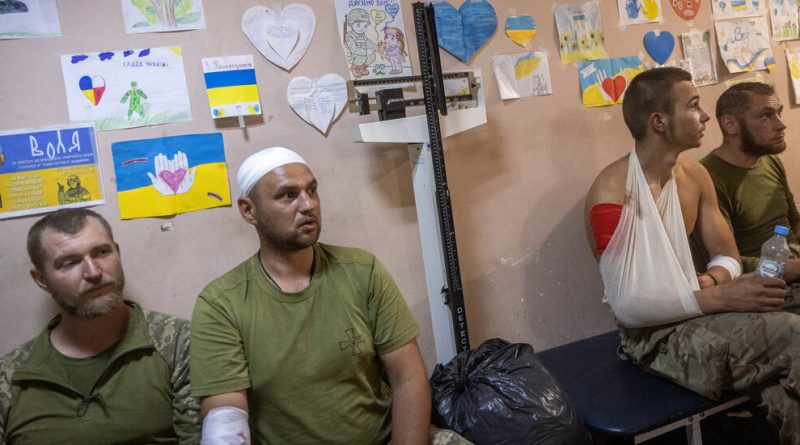Russia-Ukraine War: Latest News: Biden Reassures World Leaders of U.S. Commitment to Ukraine

As Ukraine’s counteroffensive has rumbled forward in recent months, it has encountered minefields and forces dug into elaborate trench networks. Kyiv’s forces have also run up against a Russian tactic of ceding ground before striking back.
Reports on Monday illustrated the issue: Russian forces said they had staged an assault on Ukrainian troops on the front line in the Zaporizhzhia region, while Ukraine’s forces said it had “repelled the attacks.”
Rather than holding a line of trenches at all costs in the face of Ukraine’s assault, security experts say, Russian commanders have employed a longstanding military tactic known as “elastic defense.”
The tactic sees Russian forces pull back to a second line of positions, encouraging Ukrainian troops to advance, then strike back when the opposing forces are vulnerable — either while moving across open ground or as they arrive at recently abandoned Russian positions.
The goal is to prevent Ukrainian troops from actually securing a position and using it as a base for further advances. That’s what Ukraine was able to do with success in the village of Robotyne in the south, their biggest breakthrough in recent weeks.
“The defender gives ground while inflicting as heavy casualties as they can on the attackers with a view to being able to set the attackers up for a decisive counterattack,” said Ben Barry, a senior fellow for land war studies at the International Institute for Strategic Studies, a British think tank.
This tactic is just one of several factors that have impeded more rapid progress, according to Ukrainian officials and military experts. They also cite Moscow’s use of dense minefields, networks of trenches and tank barriers, as well as the West’s reluctance to supply advanced fighter jets and longer-range weapons sooner in the war.
Perhaps the most formidable obstacle is Russia’s large stockpiles of artillery, which have been deployed throughout the conflict and not least to repel the counteroffensive that began in June.
Elastic defense is not a new approach, Mr. Barry said. The Soviet Union employed it during its defeat of Germany in 1943 at the Battle of Kursk, one of the biggest on the eastern front during World War II. Russia also appears to have been applying it for some time in Ukraine.
Assessing whether the tactic is being deployed on any given day is difficult without direct access to Russian commanders, experts said. But the Institute for the Study of War, a think tank based in Washington, noted signs of it in recent days around Robotyne, which fell to Ukrainian forces at the end of August.
Some significant field fortifications had changed hands several times, it said in a report this weekend, adding that Russian forces had “been conducting successful limited tactical counterattacks.”
A key factor in the successful implementation of elastic defense is the judicious use of military reserves, who can be thrown into the battle for a counterattack, said Oleksiy Melnyk, a former Ukrainian commander who is now a senior official at the Razumkov Center, a think tank in the capital, Kyiv.
Moscow appeared to have begun to deploy elite airborne units to its defense in the Zaporizhzhia region, according to Mr. Melnyk, suggesting that its supply of regular reserves could be running thin — a development that Mr. Melnyk said would be “encouraging news” for Ukraine.
Michael Kofman, a senior fellow at the Carnegie Endowment for International Peace, said that if Moscow’s forces begin to retreat more than a few hundred yards at a time, and Ukrainian troops, particularly mechanized units, are able to build up enough momentum to advance in significant numbers, it would be a sign that Russia’s defensive strategy was beginning to falter.
“One of the biggest things that remains in question is whether or not the Ukrainian military will be able to achieve a breakthrough,” he said on the “War on the Rocks” podcast last week. One alternative, he said, is that “what we’re seeing is largely how this offensive was going to unfold from now until, let’s say we get into the winter, or perhaps even through the winter.”
Source – NY Times




